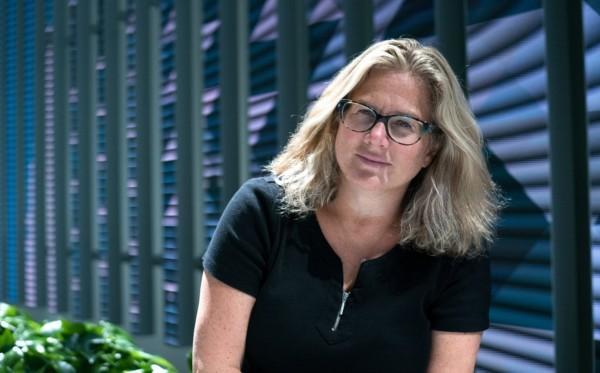20Sep2021
As target groups have become fragmented and disruption the new normal, building the bridge between consumers and decision-makers is more challenging than ever.
At the same time, making those connections has become an outright prerequisite of survival, and one that is thankfully flourishing.
Understanding why and how people do what they do can help make the connection between brands and consumers strong and flexible. This is the driving idea behind Fjord Trends – an annual collection of visions of where the world is heading.
In addition to having an impact on both cultural and societal basis, trends tell us things that organizations need to be aware of.
“Trends are about the approach of putting people first”, explains Martha Cotton, global co-lead at Fjord, Accenture’s Interactive design and innovation practice. “They are less about technological transformation and more about how people are engaging with technology, and how that engagement is altering our lives.”

Photo of Martha Cotton.
Trending with digitalization
As important as trends are in today’s decision-making, they have not been around for very long. The idea of trends came up about 15 years ago, as digitalization was getting in gear and data utilization started gaining popularity.
Data told what people did and when. However, it did not explain why and how they did what they did. As the amount of available data grew at a fast rate, the mere crunching of numbers only scratched the surface; add the fragmentation of target groups and growing criticism towards mass communication, and organizations realized that speaking in volumes was no longer enough to raise attention, let alone convince the modern decision-maker.
You had to start digging deeper if you wanted to find a way to the customer’s heart. Understanding the reasons behind the ways people behave became essential.
Fjord’s origins are in human-centered service design, and this helped the company create the idea of trends. Co-founded by Mark Curtis and Olof Schybergson, they realized that no one was looking at the world from this angle; digitalization was suddenly upon us, but the intersection of humans, design and technology was not given much attention.
The time had come to begin to understand.
A collective effort to see around the corner
Creating the annual trends is a company-wide effort, where no stone is left unturned. An editorial committee crowdsources trends in business, technology, and design for the coming year from Accenture Interactive’s global design network of 2,000+ creatives in more than 40 locations. The goal being to envision the technological, digital, and cultural trends that they believe will be most important for organizations, employees, and consumers in the coming year.
“We gather global evidence of what is happening, leveraging our teams from around the world” Cotton explains. “We start out by setting up the structure for data gathering. After a series of iterative loops, the team edits the trends from the evidence provided by cities and areas.”
While the Fjord Trends are created based on the situation at that moment, they do possess certain continuance. While we are looking at rapid nature of change and its impact to people and culture, the core human nature has not changed that much.
The balance between physical and digital retail as well as increased scrutiny of individual customers towards the brand they engage with are examples of threads that Fjord has been following for several years.
Trends and the human approach
Cotton’s background is in anthropology, so she likes to look at the world and the people qualitatively. She is a firm believer in data diversity – data comes in all shapes and sizes, not just in numbers. Photographs, videos, social media, and such elements – including big data – are required to create a complete picture of what’s happening in the world.
Having taught the subject of trends at a business school for a dozen years, Cotton finds it interesting to see the impact from the other side.
“My graduates are tomorrow’s business leaders, and they are getting a human-centered business degree. This is a big trend in education and more evidence of the fact that this development of human-centered approach is growing.”
Last year, creating Fjord Trends was a moment of upheaval, and approaching 2022, the situation has not changed that much. While there are still so many things to be afraid of, conveying the message that light shines at the end of the tunnel can make all the difference.
“It is important to figure out a way to talk about this moment in time as an opportunity”, Cotton emphasizes. “We are standing in the middle of a new map which, besides being scary, provides us a chance to redraw where we are and where we are going.”
From reflections to tangible action
As the general development seems to be staying on the same course, organizations should first think of the ways to make the most of what they already know. Lots of lessons have been learned over the last year so reflections of these once-in-a-century experiences will provide a foundation for the new Fjord Trends as well. As Cotton and her team concentrate on the key challenge of pulling out the actionable insights, it is important for the organizations and decision-makers to understand that the outcome will provide valuable tools to improve performance and become relevant across all levels.
Cotton’s focus in work has always been on understanding people and applying that to meaningful decisions. While the Fjord Trends are certainly interesting, they aim to be, first and foremost, hands-on aid that can help bring home results.
She adds, “We believe that technology enables people, not the other way around. Understanding how people’s lives change based on what they are doing, organizations are a lot better equipped to respond to what is happening in the world.”
This article concludes the 2021 Fjord Trend series that has been running on the Nordic Business Report website in the course of the year.
Get a closer look at the 2021 Fjord Trends, along with commentary from Fjord experts:
Collective displacement: Dealing with transforming customers
Do it yourself innovation: From technology to human ingenuity
Sweet teams are made of this: Redefining employee experience
Interaction wanderlust: Life on the big screen
Liquid infrastructure: The new slices of the pie
Empathy challenge: One size seldom fits all
Rituals lost and found: Habits, rituals, and the way to the modern customer’s heart


